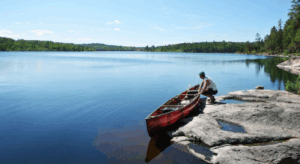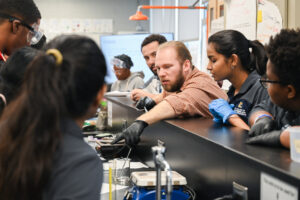3 Scientific Innovations To Ease Your Climate Anxiety

The 10 warmest years on record since 1850 have all been in the last decade, with 2024 registering as the warmest yet, according to the National Oceanic Atmospheric Administration. In addition, the U.S. experienced 27 individual weather and climate disasters in 2024 —translating into at least $1 billion in damages, also according to NOAA.
People are noticing the trends. According to the 2025 Gallup March 3-16 Environment survey, 48% of adults in the U.S. expect global warming will eventually pose a serious threat to themselves or their way of life—up from 44 percent in 2024.
Acknowledging the potential threats associated with climate change can sometimes cause worry or anxiety. However, strategies exist for managing such stress. Even better, scientists are working diligently on solutions to make society more resilient to the changing climate and its effects — perhaps further alleviating stress.
Climate anxiety explained
Some 64% of Americans said they’re somewhat worried about global warming in a December 2024 survey conducted by the Yale Program on Climate Change Communication and the George Mason University Center for Climate Change Communication. Of those respondents, 28% said they are “very worried.”
The feeling has become prevalent enough that the American Psychological Association in 2017 coined the term “ecoanxiety” — also dubbed “climate anxiety” — to describe the “chronic fear of environmental doom” felt by many people.
According to information from the Cleveland Clinic, symptoms of climate anxiety can include everything from feeling guilty or ashamed for not doing enough for the environment, to feeling overwhelmed and helpless, to losing sleep over the issue.
On the flip side, healthy ways to combat climate anxiety include researching solutions, seeking support from others, spending time in nature, and taking action, according to the same information.
3 climate-friendly scientific innovations
Researching solutions is what UL Research Institutes does best. ULRI safety scientists are making progress on a variety of solutions to some of climate change’s most pressing issues by researching:
- Water harvesting. To counter climate-induced water scarcity, scientists are working on harvesting water from the air to produce clean drinking water, particularly in dry regions around the globe where it’s needed most.
- Wildfire-ready air purifiers. While warmer temperatures and drier conditions may be spurring more wildfires, scientific research has uncovered practical information to help people reduce or avoid exposure to wildfire emissions—including how to make a DIY air cleaner.
- Safer sustainable energy. Scientific research is well underway to advance the safer, design and deployment of sustainable energy storage and energy generation. By improving renewable energy solutions and mitigating the risks associated with them — particularly lithium-ion batteries and green hydrogen — a safer transition to a clean energy future is possible.
Innovations to help curb water scarcity and air pollution from wildfires, and to further enable a clean energy future are only a few of the many positive outcomes stemming from an abundant amount of scientific research that can provide hope for a safer, more sustainable future and perhaps tame some climate anxiety.









